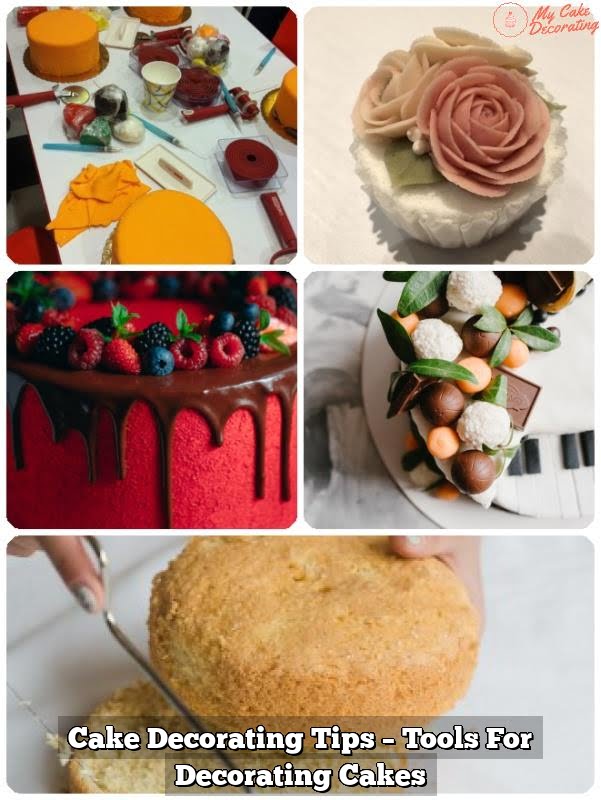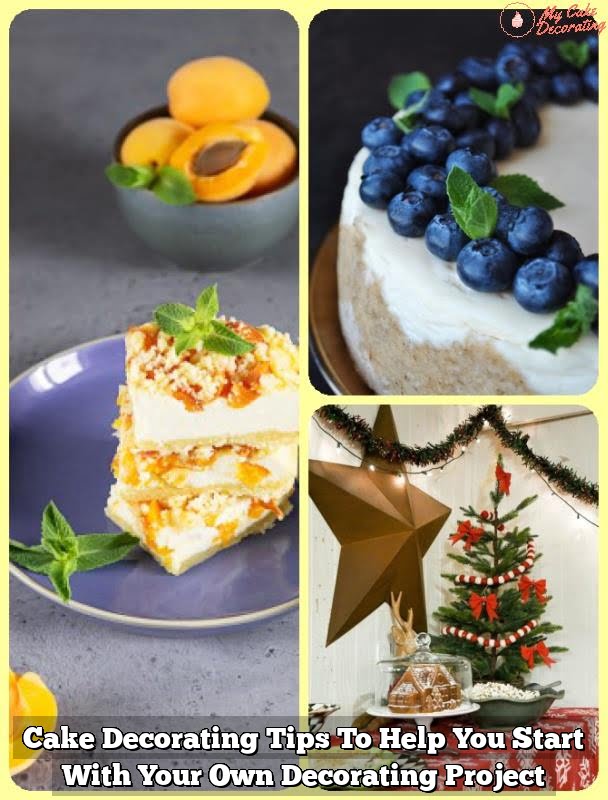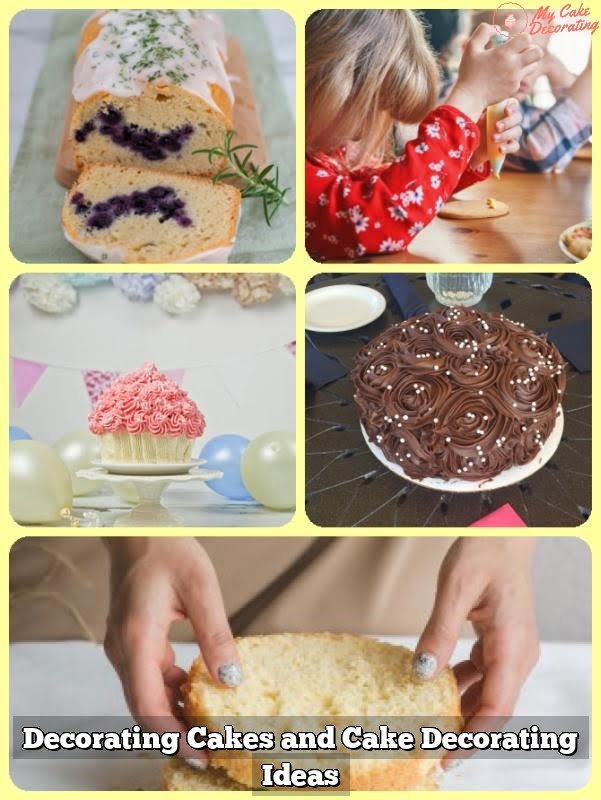Are you looking to add a touch of professional flair to your baked creations? If so, learning how to use cake decorating stencils can be the perfect way to elevate your cake decorating skills.
Whether you’re a beginner or an experienced baker, using stencils can add a stunning visual element to your cakes. This article will guide you through the basics of cake decorating stencils, exploring different designs and materials, essential tools and equipment needed, as well as providing tips for preparing your cake for stenciling.
Cake decorating stencils come in various types, each offering unique designs and made from different materials. Understanding these variations can help you choose the right stencil for your specific decorating needs.
In addition to this, knowing the essential tools and materials needed for using cake decorating stencils is crucial in ensuring successful results. From spatulas and offset spatulas to edible spray colors and icing spreaders, having the right equipment can make all the difference in achieving beautiful designs on your cakes.
In this section of the article, we’ll delve into the basics of using cake decorating stencils, providing a step-by-step guide on applying the stencil onto your cake. Furthermore, we’ll explore various decorating techniques that can be used with stencils to create stunning patterns and intricate designs. Whether you’re looking to add simple elegance or intricate details to your cakes, utilizing different methods with stencils can help you achieve professional-looking results every time.
Types of Cake Decorating Stencils
Cake decorating stencils come in a variety of designs and materials, allowing for endless possibilities when it comes to creating beautiful and unique cakes. Whether you are looking for a classic design or something more modern and abstract, there is a stencil out there to suit your needs.
1. Plastic Stencils: Plastic stencils are durable and easy to clean, making them a popular choice for cake decorators. They come in a wide range of designs, from intricate lace patterns to fun and whimsical shapes.
2. Mesh Stencils: Mesh stencils are great for achieving delicate and detailed designs on your cakes. These stencils are flexible and can conform to the shape of your cake, allowing for seamless application.
3. 3D Stencils: For those looking to add some depth and dimension to their cakes, 3D stencils are the way to go. These stencils create raised designs on your cake, giving it a more three-dimensional look.
4. Fondant Stamps: Fondant stamps can also be considered a form of stencil, as they are used to emboss patterns or images onto fondant-covered cakes. These stamps come in various designs and can add an elegant touch to your creations.
When using cake decorating stencils, it’s important to choose the right type of stencil for the design you have in mind. Consider the theme of your cake and the overall look you want to achieve before selecting a stencil. With the wide variety available, you’re sure to find the perfect stencil for your next cake decorating project.
Tools and Materials Needed
When it comes to using cake decorating stencils, having the right tools and materials is crucial for achieving professional-looking results. Here are some essential equipment you’ll need to effectively use cake decorating stencils:
- Stencils: Of course, the most important item you’ll need is a variety of cake stencils. These can come in different designs, sizes, and materials such as plastic or metal. It’s always a good idea to have a selection of stencils to choose from to suit various cake decorating projects.
- Palette knife or offset spatula: A palette knife or offset spatula is essential for smoothing the icing over the stencil without smudging the design. This tool allows for precise application of frosting or fondant.
- Edible spray paint or airbrush: Using edible spray paint or an airbrush can add dimension and depth to your designs when using stencils. These tools allow for a more seamless and professional finish.
- Fondant smoother: If you are working with fondant, a fondant smoother will help ensure that the stencil design adheres well to the surface of the cake without any air bubbles or creases.
- Food-safe adhesive: To keep the stencil in place while working on your cake, you may need food-safe adhesive such as non-toxic tape or small dabs of frosting.
In addition to these tools, it’s important to have the right materials on hand when using cake decorating stencils:
- Icing or frosting: The type of icing you use will depend on your personal preference and the design you want to achieve. Buttercream, royal icing, and fondant are commonly used for stencil work.
- Cake turntable: A revolving cake stand will make it easier to apply the stencil evenly around the entire cake without having to constantly lift and adjust it.
- Clean cloth or paper towels: Keeping your stencil clean between uses is essential for maintaining crisp designs. Having a clean cloth or paper towels on hand will allow you to wipe off any excess icing before reapplying the stencil.
By having these tools and materials at your disposal, you’ll be well-equipped to create beautifully decorated cakes using stencils.
Preparing the Cake
When it comes to using cake decorating stencils, the preparation of the cake is just as important as the actual stenciling process. By properly preparing your cake, you can ensure that the stencil will adhere smoothly and that your design will come out looking flawless. Here are some tips for preparing your cake for stenciling:
Choosing the Right Cake
The type of cake you use can greatly impact how well the stencil design turns out. It’s best to use a dense, firm cake such as a pound cake or a sponge cake that has been refrigerated beforehand. This will make it easier to handle when applying the stencil and decrease the chances of damaging the cake during the process.
Applying a Crumb Coat
Before applying the stencil, it’s important to create a smooth surface on your cake by applying a crumb coat of frosting. This thin layer of frosting helps to trap any loose crumbs and provides a clean base for your stencil design. Allow the crumb coat to set before proceeding with stenciling.
Chilling the Cake
To make sure that your stencil design doesn’t get smudged or distorted during application, it’s recommended to chill your frosted cake in the refrigerator for at least 30 minutes before stenciling. The chilled frosting will be firmer and less likely to stick to the stencil, resulting in sharper, cleaner designs.
By following these preparation tips, you can set yourself up for success when using cake decorating stencils. Taking the time to properly prepare your cake will ensure that you achieve professional-looking results in your stenciled designs.
Applying the Stencil
When it comes to using cake decorating stencils, there are a few key steps to follow to ensure that you achieve the best results. Whether you are a beginner or have some experience with cake decorating, following a step-by-step guide can help you master the art of using stencils to create stunning designs on your cakes.
Step 1: Choose the Right Stencil
The first step in using cake decorating stencils is to choose the right stencil for your design. There are many different designs and sizes available, so it’s important to consider the size and shape of your cake, as well as the specific design you want to achieve. It’s also important to consider the material of the stencil, as this can affect how well it adheres to the cake surface.
Step 2: Secure the Stencil
Once you have chosen the right stencil for your design, it’s time to secure it onto your cake. You can use various methods to do this, such as tape or edible adhesive. Make sure that the stencil is firmly attached to the cake surface, as any movement during the decorating process can result in smudged or uneven designs.
Step 3: Apply Your Decorating Medium
Next, you will need to choose and apply your decorating medium, such as royal icing or powdered sugar. Using a spatula or a sifter, carefully apply a thin layer of your chosen medium over the stencil design. Make sure that you cover the entire design evenly and without any gaps. Then, gently remove the stencil from the cake, being careful not to smear the design in the process.
By following these simple steps for using cake decorating stencils, you can achieve beautiful and professional-looking designs on your cakes. With some practice and creativity, you can use stencils to add unique and intricate designs that will impress anyone who sees-and tastes-your creations.
Decorating Techniques
When it comes to using cake decorating stencils, there are several techniques that can help you achieve beautiful designs on your cakes. One common technique is the “stencil and spread” method, where you place the stencil over the cake and use a spatula or icing smoother to spread frosting over the stencil.
This creates a crisp, clean design on the surface of the cake. Another popular technique is the “airbrushing” method, which involves using an airbrush tool to spray food coloring over the stencil onto the cake, creating a more intricate and detailed design.
For those who prefer a more subtle approach, the “dusting” method can also be used with cake decorating stencils. This involves placing the stencil on the cake and then gently dusting powdered sugar or cocoa powder over it, leaving behind a delicate pattern. For those who want to add dimension to their designs, the “layering” technique can be employed by using multiple stencils with different designs or colors to create a layered effect on the cake.
No matter which decorating technique you choose, it’s important to secure the stencil firmly in place to prevent any smudging or shifting during application. Additionally, choosing contrasting colors for your designs can help them stand out more prominently on your cakes.
By experimenting with these different techniques, you can discover which method works best for your desired design and master how to use cake decorating stencils effectively in achieving stunning results.
Whether you’re a beginner or an experienced baker, these techniques offer various options for adding beautiful and professional-looking designs to your cakes with ease. With practice and creativity, you’ll be able to make impressive designs that will surely impress your friends and family at any celebration.
Troubleshooting
When using cake decorating stencils, there are a few common issues that may arise, but with the right techniques, you can easily avoid them. One of the most common issues is the stencil moving around while you’re applying the icing. To prevent this, it’s important to secure the stencil firmly in place before you begin. You can use a non-stick spray or double-sided tape to keep it in place on the surface of the cake.
Another issue that may occur is smudging or bleeding of the design. This can happen if the icing is too runny or if too much pressure is applied when spreading the icing over the stencil. To avoid this, make sure your icing has the right consistency, and use a gentle hand when spreading it over the stencil. Additionally, always lift the stencil straight up from the cake to prevent smudging.
Lastly, air bubbles trapped under the stencil can also cause imperfections in the design. To prevent this, gently smooth out any air bubbles from underneath the stencil using a cake scraper or offset spatula before applying icing over it. Taking these precautions will help ensure clean and precise designs when using cake decorating stencils.
| Common Issue | Preventive Technique |
|---|---|
| Stencil moving around during application | Secure stencil with non-stick spray or double-sided tape |
| Smudging or bleeding of design | Use proper consistency for icing and lift stencil straight up |
| Air bubbles trapped under stencil | Gently smooth out air bubbles before applying icing |
Creative Ideas
In conclusion, cake decorating stencils are a versatile tool that can be used to create stunning designs on cakes and other baked goods. Whether you are a beginner or an experienced baker, understanding the basics of cake decorating stencils is essential in achieving beautiful results. By exploring different types of stencils and materials, as well as mastering the necessary tools and techniques, you can elevate your cake decorating skills to a whole new level.
Once you have prepared your cake for stenciling and selected the design you want to use, it’s time to apply the stencil. Following a step-by-step guide will ensure that you achieve clean and precise designs on your cake. Additionally, by experimenting with different decorating techniques, such as using royal icing or edible sprays, you can create unique and eye-catching patterns that will impress your guests.
While using cake decorating stencils, it’s important to be aware of common issues that may arise, such as bleeding or smudging. By learning how to troubleshoot these problems and avoid them altogether, you can ensure that your finished product is flawless. Finally, don’t be afraid to think outside the box when it comes to using stencils.
You can use them on cookies, cupcakes, or even as a template for painting edible designs on fondant. The possibilities are endless when it comes to using cake decorating stencils for stunning results.
Frequently Asked Questions
How Do You Keep Stencils From Sticking to Cakes?
To prevent stencils from sticking to cakes, it’s important to ensure that the cake is completely cooled before applying the stencil. Dusting the stencil with powdered sugar or cornstarch can also help prevent sticking.
Why Is My Stencil Not Working on My Cake?
If your stencil is not working on your cake, it could be due to several reasons. First, make sure the cake surface is dry and free of any crumbs or icing ridges that could interfere with the stencil design. Additionally, applying too much pressure when smoothing over the stencil could cause it to stick and blur the design.
How Long to Chill Cake Before Stenciling?
The recommended time to chill a cake before stenciling varies depending on the type of frosting used. For buttercream frosting, it’s best to chill the cake for 15-20 minutes. For ganache or fondant-covered cakes, allow them to chill for about 30 minutes to ensure that the surface is firm enough for stenciling.

Welcome to my blog about home and family. This blog is a place where I will share my thoughts, ideas, and experiences related to these important topics. I am a stay-at-home mom with two young children. I hope you enjoy reading it! and may find some helpful tips and ideas that will make your home and family life even better!





